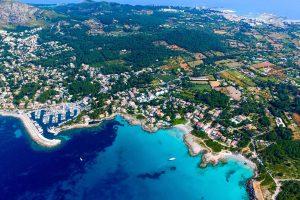Soft Drinks in Spain
Soft drinks, or “bebidas refrescantes” as they are known in Spain, have a unique and rich history in the Spanish market. From traditional lemonades and colas to innovative and health-conscious alternatives, these beverages play an integral role in Spanish culture.
This article explores the evolution of soft drinks in Spain, highlighting the major brands, consumer trends, and the cultural significance that these fizzy favorites hold. Whether enjoyed at a festive gathering, paired with tapas, or simply as a refreshing break during a hot summer day, soft drinks are a staple in the everyday lives of Spaniards.
Additionally, for tourists visiting Spain, understanding the drinking age is essential. The legal drinking age in Spain is 18 years old, and this applies uniformly across the country, including major cities like Madrid, Barcelona, and Málaga. This guide will also provide insights on how these regulations affect tourists and offer practical advice for a smooth experience.
Join us as we dive into the effervescent world of soft drinks in Spain, uncovering the flavors, traditions, and market dynamics that make this segment of the beverage industry so vibrant and essential, while also exploring the key legal considerations for tourists regarding the drinking age.
Contents
History of Soft Drinks in Spain
The history of soft drinks in Spain is a tale of innovation and cultural adaptation. The introduction of carbonated beverages in Spain dates back to the late 19th century. During this period, the industrial revolution brought technological advancements that made the production and distribution of carbonated drinks possible. Initially, these beverages were considered a luxury, enjoyed primarily by the upper classes and at special occasions.
As the 20th century dawned, the landscape of soft drinks in Spain began to evolve rapidly. International brands like Coca-Cola and Pepsi entered the Spanish market, bringing with them a new wave of marketing and consumer interest. These global giants introduced a variety of flavors and styles, quickly gaining popularity among Spaniards. Alongside these international brands, local favorites such as La Casera and Kas emerged, offering unique and distinctly Spanish flavors that resonated with the local palate.
By the mid-20th century, soft drinks had become a staple in Spanish households. The accessibility of these beverages increased as production costs lowered and distribution networks expanded. Soft drinks were no longer a luxury but an everyday refreshment available to people of all social classes. The cultural integration of these beverages was evident as they became a common feature at social gatherings, family meals, and festive celebrations. Local customs, like mixing La Casera with wine to create the beloved “Tinto de Verano,” showcased how Spaniards made these drinks their own, blending them seamlessly into their culinary traditions.
The late 20th century and early 21st century saw continued growth and diversification in the Spanish soft drink market. Health trends and changing consumer preferences led to the introduction of sugar-free and natural ingredient options. Innovations in packaging and marketing further solidified the presence of soft drinks in Spanish daily life. Today, the soft drink industry in Spain is a vibrant and dynamic sector, reflecting the country’s rich history and evolving tastes.
Soft drinks market trends in Spain
The soft drink market in Spain is characterized by diverse consumption patterns. Spaniards enjoy a wide variety of soft drinks, ranging from classic colas to an array of fruit-flavored sodas. Traditional favorites such as lemon and orange sodas remain popular, while newer, more exotic flavors are continually being introduced to the market. Soft drinks are a staple at social events, family gatherings, and mealtimes, reflecting their deep-rooted presence in Spanish culture.
Health trends are significantly shaping the soft drink industry in Spain. With increasing awareness of health and wellness, there is a growing demand for healthier beverage options. Consumers are becoming more conscious of the sugar content and artificial additives in their drinks. As a result, many brands have responded by offering sugar-free and low-calorie versions of their popular products. Additionally, beverages made with natural ingredients and fewer artificial additives are gaining traction among health-conscious consumers.
Innovation is at the forefront of the soft drink market in Spain. Brands are continually seeking to attract and retain consumers by introducing new and exciting flavors. Seasonal and limited-edition releases are common, keeping the market dynamic and engaging. Furthermore, there is a strong emphasis on sustainable packaging. Companies are investing in eco-friendly materials and reducing plastic usage to meet the growing consumer demand for environmentally responsible products. These innovations not only cater to the evolving tastes of consumers but also align with global sustainability goals.

Top 10 Soft Drinks in Spain
- Coca-Cola: As in many countries, Coca-Cola is a top favorite in Spain. Its classic taste and extensive marketing have made it a staple in Spanish households, restaurants, and bars.
- Pepsi: Pepsi is another leading cola brand, offering a slightly sweeter alternative to Coca-Cola. It enjoys a loyal customer base in Spain.
- Kas: Kas is a Spanish brand known for its fruity flavors, especially orange (Kas Naranja) and lemon (Kas Limón). It’s particularly popular for its refreshing taste and is often consumed at social gatherings.
- La Casera: Famous for its lemon soda, La Casera is a traditional favorite often mixed with wine to create “Tinto de Verano.” It’s a nostalgic brand that remains popular across generations.
- Fanta: Fanta, particularly its orange flavor, is widely enjoyed in Spain. It’s a go-to choice for a refreshing, fruity soda, especially among younger consumers.
- Schweppes: Known for its tonic water and other mixers, Schweppes is a staple in the Spanish beverage market. It’s commonly used in cocktails and mixed drinks.
- Nestea: Nestea offers a variety of iced tea flavors, providing a popular alternative to carbonated drinks. Its lemon and peach iced teas are particularly favored in Spain.
- Aquarius: Originally developed as a sports drink, Aquarius has gained popularity as a general soft drink. Its light, refreshing taste makes it a preferred choice, especially in warmer months.
- Trina: Trina is a well-loved Spanish brand offering a range of non-carbonated fruit drinks. Made with real fruit juice, Trina’s orange and tropical flavors are especially popular.
- Appletiser: This sparkling apple drink is appreciated for its natural taste and lack of added sugars. It’s often chosen as a healthier alternative to traditional soft drinks.
Cultural Significance about soft drinks in Spain
Soft drinks hold a special place in Spanish culture, reflecting the country’s vibrant social traditions and culinary practices. These beverages are more than just refreshments; they are integral to the social fabric of Spain. From bustling city cafés to quiet village squares, soft drinks are a common feature, bringing people together and enhancing the communal experience.
One of the most notable cultural practices involving soft drinks in Spain is their role in social gatherings. Whether it’s a casual get-together with friends, a family celebration, or a local festival, soft drinks are always present. They are often enjoyed alongside a variety of tapas, small dishes that are a cornerstone of Spanish cuisine. The pairing of tapas with soft drinks, such as a refreshing Kas or a classic Coca-Cola, is a beloved tradition that enhances the flavors of both the food and the drink.
Soft drinks also play a significant role in Spanish culinary customs. One popular example is the “Tinto de Verano,” a refreshing summer drink made by mixing red wine with lemon soda, typically La Casera. Another traditional combination is “Clara,” a mix of beer and lemon soda, which is especially popular during the hot summer months. These unique beverages highlight the creative ways Spaniards incorporate soft drinks into their daily lives and seasonal traditions.
Moreover, soft drinks are a staple in the Spanish lifestyle, reflecting the country’s regional diversity. In the north, you might find locals enjoying a Kas de Limón, while in the south, a cold bottle of Cruzcampo with a splash of lemon soda is a common sight. This regional variation adds a layer of richness to the cultural significance of soft drinks, demonstrating how these beverages are woven into the local identity and preferences.
In summary, soft drinks in Spain are much more than just thirst-quenchers; they are an essential part of the social and culinary landscape. They bring people together, complement traditional foods, and are deeply embedded in the cultural practices that define the Spanish way of life.
Economic Impact soft drinks
The soft drink industry is a significant contributor to the Spanish economy. With a market size that encompasses a wide range of products and brands, both national and international, the industry generates substantial revenue annually. The continuous demand for soft drinks, driven by both local consumption and tourist interest, ensures a steady flow of income that bolsters economic stability.
Employment within the soft drink sector is another critical aspect of its economic impact. The industry provides numerous jobs across various segments, including manufacturing, distribution, and retail. Factories that produce these beverages employ thousands of workers, from production line operators to quality control specialists. Distribution networks, which ensure that soft drinks reach every corner of Spain, also create jobs for logistics professionals and delivery drivers. In the retail sector, countless stores, supermarkets, and vending machine operators rely on the sale of soft drinks as a significant part of their business, further supporting employment.
Tourism in Spain benefits notably from the soft drink industry. Tourists visiting Spain are eager to experience local flavors and traditions, including the wide variety of soft drinks available. Unique beverages like Kas, La Casera, and various regional specialties attract the curiosity of visitors. This interest not only boosts sales but also enhances the cultural exchange between locals and tourists. Soft drinks thus play a role in promoting Spain’s culinary heritage and contribute to the overall tourist experience, making them a small yet meaningful part of the country’s appeal to international visitors.
FAQ About soft drinks in Spain
Does Spain have any popular soft drink brands?
Yes, Spain has several popular soft drink brands that are well-loved by locals and have a significant presence in the market. Here are a few notable ones:
- Kas: Known for its fruity sodas, especially Kas Naranja (orange) and Kas Limón (lemon). Kas is a classic Spanish brand with a strong following.
- La Casera: Famous for its lemon soda, La Casera is often used to make “Tinto de Verano,” a popular summer drink that combines lemon soda with red wine.
- Trina: Offers a range of non-carbonated fruit drinks made with real fruit juice. Flavors like orange and tropical are particularly popular.
- Mahou: Primarily known for its beers, Mahou also offers a range of soft drinks, including their popular lemon soda.
- Zumosol: Specializes in fruit juices and soft drinks made with natural ingredients. It’s well-regarded for its quality and taste.
These brands reflect the local preferences and traditions in Spain, offering a blend of refreshing flavors and unique beverages that cater to diverse tastes.
Can you buy Pepsi in Spain?
Yes, you can buy Pepsi in Spain. Pepsi is widely available across the country and can be found in supermarkets, convenience stores, and many restaurants and bars. It is a popular choice alongside other soft drink brands and enjoys a significant presence in the Spanish beverage market.
What is a popular non-alcoholic drink in Spain?
A popular non-alcoholic drink in Spain is “horchata”. This refreshing beverage is especially popular in the Valencian region but enjoyed throughout the country. Horchata (or “orxata” in Valencian) is a sweet, creamy drink made from tiger nuts (chufas), water, and sugar, often flavored with cinnamon and vanilla. It’s typically served chilled and is a favorite choice during the warmer months.
Another widely enjoyed non-alcoholic drink in Spain is “tinto de verano”, a refreshing summer drink made by mixing red wine with lemon soda. While it typically contains wine, many people enjoy a non-alcoholic version by substituting the wine with more lemon soda or another fruity soft drink.
In addition to these, Spain also has a variety of fruit juices and sodas that are popular, such as Fanta and Kas, offering a range of flavors from orange to lemon.
Conclusion about soft drinks in Spain
Soft drinks in Spain are more than just popular beverages; they are a vibrant part of the country’s cultural and economic landscape. From the historic introduction of carbonated drinks in the late 19th century to the current diverse market filled with both traditional and innovative options, soft drinks have evolved to meet changing consumer preferences and trends.
Today, Spain boasts a rich array of soft drink options, including beloved local brands like Kas and La Casera, alongside international giants such as Coca-Cola and Pepsi. These beverages not only quench thirst but also play a significant role in social gatherings and culinary traditions, seamlessly integrating into daily life and special occasions alike.




